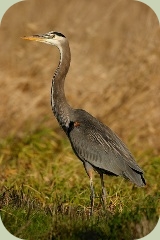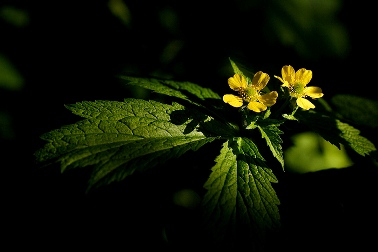Nature Photography for Beginners

Nature Photography for Beginners
Nature photography for beginners is an exciting and very rewarding pastime. It seems only natural that when you see something exciting or interesting in the natural world, you want to capture it or record it in some way. Cameras are a great way to do just that!
I will focus here on digital cameras, since currently a majority of photographers (especially beginners) start with digital cameras - though many of the ideas and techniques mentioned are transferable to film cameras as well.
So, let's look at some things you can do to practice nature photography for beginners…
What Do You Want to Capture?
So you want to try your hand at nature photography? Even before you purchase a new camera or start using one, ask yourself what is it that you want to capture? Here are some questions to ask yourself:
- Do I want to capture close ups of small plants, flowers, insects and other small things in nature?
- Do you want to photography larger, faster moving animals such as birds, deer, bears and so on?
- Do you want to take spectacular photos of sunsets, mountains, lakes and the like?
- Do you want to use your camera to record events or things you find in nature like bones, tracks, weather patterns and things like that?
- Do you want to make abstract photos of the natural world, just focusing on things such as patterns, textures, colors and so on?
- Maybe you want to do all of the above?
If you start with a simple digital point-and-shoot camera, you may find (depending on its quality) that many if not most of your needs in nature photography are met. Though, you may also want to look into getting a better camera. Either way if you are looking to purchase a camera, you will be faced with the…
Megapixel Madness
If you are interested in purchasing a new digital camera, you are might be familiar with all the talk about megapixels. With high quality cameras now available to the general public in the 12+ megapixel and above range, it might seem crazy to get anything less. But these cameras are mostly specialty tools for advanced photographers with very specific needs. For nature photography for beginners, starting with a camera of between 6 and 8 megapixels is actually more ideal and produces excellent images.
Also, the quality of the image produced by the camera is not necessarily equivalent to the number of megapixels it uses to record an image. All the physical components of a camera are equally important to the quality of an image. Therefore, one camera with 6 megapixels can have much lower image quality compared to another camera with better parts and the exact same number of megapixels.
Knowing how to use your camera and technique is also very important in creating quality images.
TAKING PHOTOS PART I: Nature Photography for Beginners
Knowing Your Machine
Today's digital cameras are set up to take successful photos under many different conditions and of many different subjects. It can be a great aid to you while working on nature photography for beginners to learn to use the preset buttons and settings on your digital camera.
Most digital cameras come with options to shoot macro (usually shown as a flower icon), landscape (usually shown as a mountain), portrait (a face or person), nighttime (stars or stars and the moon), high speed (a person running) and possibly several other settings. Though you may want to shoot everything in full manual mode someday, these basic functions are an excellent place to start.
Playing with your camera will help you learn all of its functions and all the possibilities available to you. It is also important to learn your cameras limitations, which generally comes from research and time spent with the camera. You might find with time that limitations can be used to work for you, and not just against you.
If you are working with a point-and-shoot camera, which has a single lens that is built into the camera it you will likely soon notice that when shooting something in the distance, you have a limitation as to how close you can zoom in on a subject. This same limitation can be overcome with a digital SLR (single-lens reflex) camera by simply changing to a longer zoom lens. Buying separate lenses for a digital SLR camera can quickly become an investment, however, so it is best to really think about what your needs are and how much you are willing to spend.
All cameras can be used much more effectively with the additional support of a tripod, monopod, or beanbag. Though sometimes camera support can be improvised in the field, it can be very helpful to have these additional tools for support. Tripods and monopods can give dramatically sharper images under a variety of conditions.
Be More Prepared For Your Next Outdoor Adventure!

Don't leave without knowing these six essential survival skills. Our free survival mini guide reveals the strategies of:
- Shelter & fire to prevent the number one cause of death
- Obtaining clean water to avoid life-threatening dehydration
- Common wild survival foods and other critical skills!

TAKING PHOTOS PART II: Nature Photography for Beginners
Knowing Your Subject
In the art of nature photography for beginners, knowing your subject is of great importance. Whether you are intending to shoot pictures of flowers or frogs, ants or elephants, it is vital you know some basic information about them.
- For instance, with flowers you will want to seek them out when they are in bloom and look for them where they like to grow.
- If animals are more your interest, know where they might live, what they like to eat and what time of day they are likely to be active is a good starting point.
- If you are intending to photograph more dangerous animals in the wild, such as bears, moose, alligators, rhinos or lions it is better if you do so with an experienced woodsman or wildlife guide.
It might be a surprise to you, but good photographers might actually spend a great deal of time reading about their intended subjects before they go out and try to photograph them. Some spend more time at their local library or online doing research, than they do in the field actually taking pictures.
TAKING PHOTOS PART III: Nature Photography for Beginners
Reading the Light
Photography really comes down to the simple act of capturing light. Seeing and understanding how that light can used and captured photographically is really an art form in itself. Some of the most masterful photographers of all time, such as Edward E. Curtis or Ansel Adams, were extremely skilled in using light to make their subjects stand out clearly. Here are just some of the many ways of looking at the use of light in nature photography for beginners:
- Light and shadow: when you look at a subject, notice only the light and shadow. What shapes do you see?
- Light behind the subject: is the background behind the subject dark or light? What about if you change your angle relative to the subject?
- If the subject is an animal, is there light in the eye? Or shadow?
- Does the light in the image add to or take away from the subject?
- Come back to the most basic questions, like: what do you want to capture in this photo?
Composition
The art of composition is another essential part of photography. How the elements in the photo are arranged and where the subjects falls in them is of immense importance. There are many aspects to composition, so let us focus on just a few here. Though beauty is certainly in the eye of the beholder, some photos are seen as beautiful by more people than other photos.
What is it that makes a photo great?
How can I make my photos stand out, and express beauty to others?
Are there secrets out there that I can use to make my photos better?
These are some questions you are bound to ask yourself when you work on creating or improving composition. The truth is, there are some techniques that can help get you on the right track with photo composition as you practice nature photography for beginners.
- Rule of Thirds: Draw 4 sets of lines across the photo so that the image is divided into 9 equally sized rectangles. Notice where the lines intersect, and when taking a photo, trying placing your subject at one of these intersecting points.
- Centering the subject: This technique is used by most people naturally. Simply put your subject in the center of the frame. Try to take several variations of the same subject using centering and the rule of thirds.
- The eye of the viewer of a photo tends to follow certain paths while looking at the image. The eyes tend to come in and to exit along certain pathways. Find some photos you really enjoy and notice where and how your eyes travel through the frame.
- Attracting or distracting the eye: Remember to focus on elements that attract the eye to the subject, and try to exclude those that distract the eye from the main subject.
- Balance: Does the image feel balanced to you? You can frame your subject so that the overall image feels balanced. For instance, if you put your subject on the right, vertical 1/3 line then try to put another subject on the vertical 1/3 line on the left as well. Compare that with a photo where you have a single subject only on one of these lines. See which you like better.
- Horizontal vs Vertical: Try experimenting with shooting both horizontal and vertical versions of the same subjects. There are certainly times when you will find one looks better than the other.
- Using color: Focusing on color is a great way to attract the eye of a viewer. Experiment with similar color themes in your images. Also, try using color for the opposite effect, making something stand out against a starkly different background or foreground.
Nature photography for beginners is an incredibly rewarding and fun craft that can be honed to mastery with time. There are many more details and techniques to work on in the study of nature photography.
By the way, when you're spending more time in nature it's important to know how to stay safe in the outdoors, especially if you were to get lost. Right now you can get a free copy of our mini survival guide here, where you'll discover six key strategies for outdoor emergencies, plus often-overlooked survival tips.
Additional Resources:
Beginning Nature and Wildlife Photography
Wilderness Courses at Alderleaf


About the Author: Filip Tkaczyk is a periodic guest teacher at Alderleaf. He also wrote the field guide Tracks & Sign of Reptiles & Amphibians. Learn more about Filip Tkaczyk.
Return from Nature Photography for Beginners to Wilderness Articles
Is The Essential Wilderness Survival Skills Course Right for You? Take the "Online Survival Training Readiness" Quiz
See for yourself if this eye-opening course is a good fit for you. It takes just a few minutes! Get your Survival Training Readiness Score Now!

Grow Your Outdoor Skills! Get monthly updates on new wilderness skills, upcoming courses, and special opportunities. Join the free Alderleaf eNews and as a welcome gift you'll get a copy of our Mini Survival Guide.

 The Six Keys to Survival: Get a free copy of our survival mini-guide and monthly tips!
The Six Keys to Survival: Get a free copy of our survival mini-guide and monthly tips!
Learn more